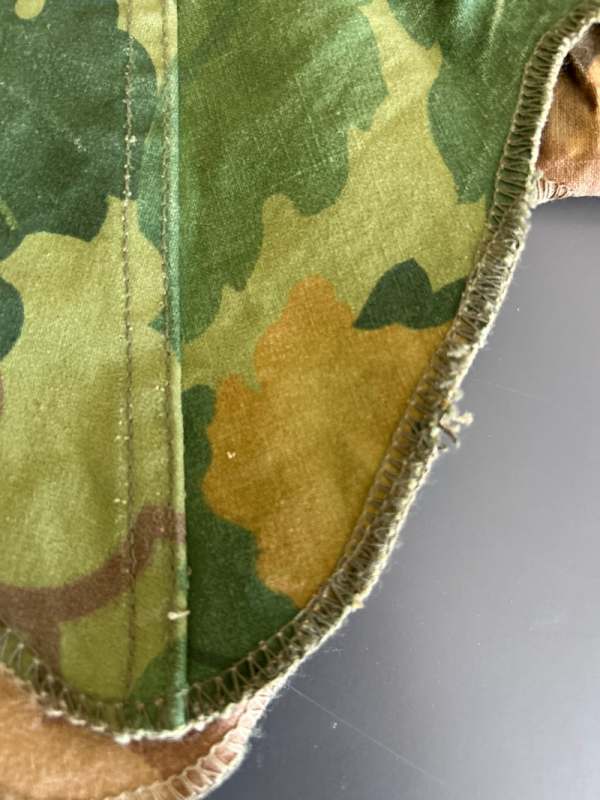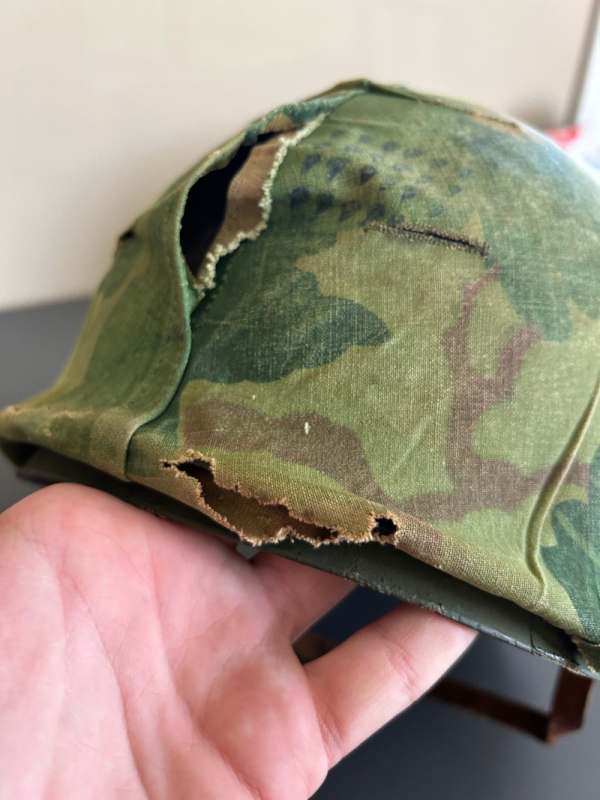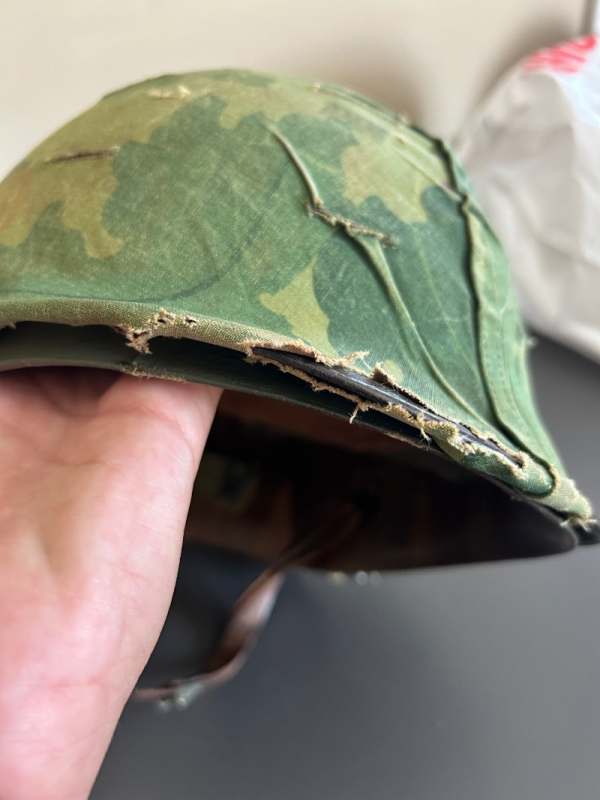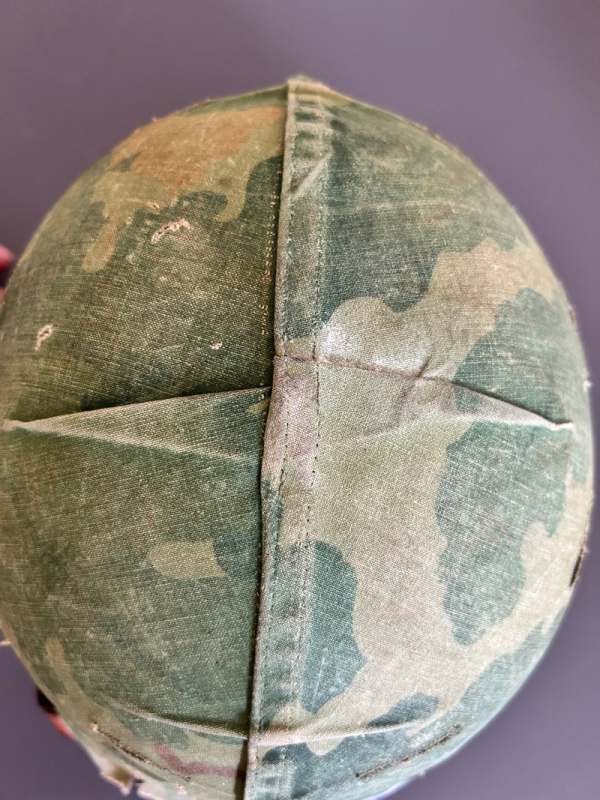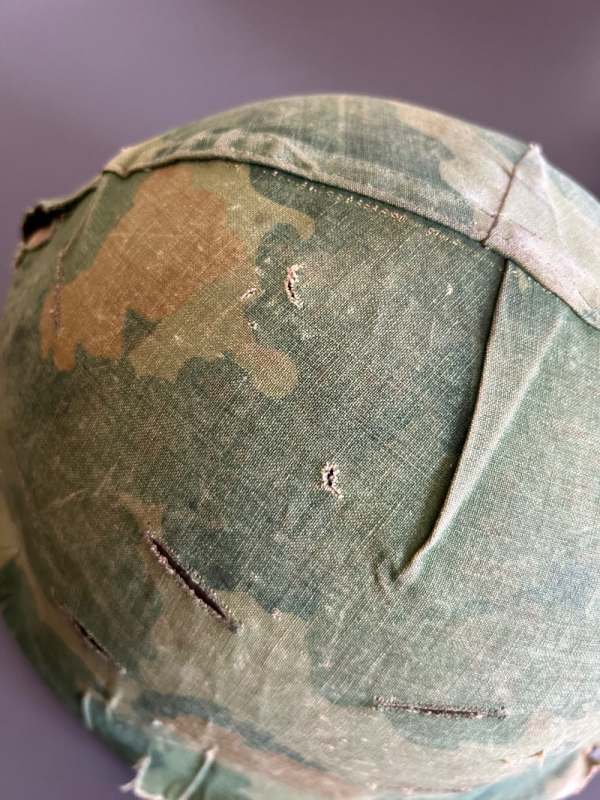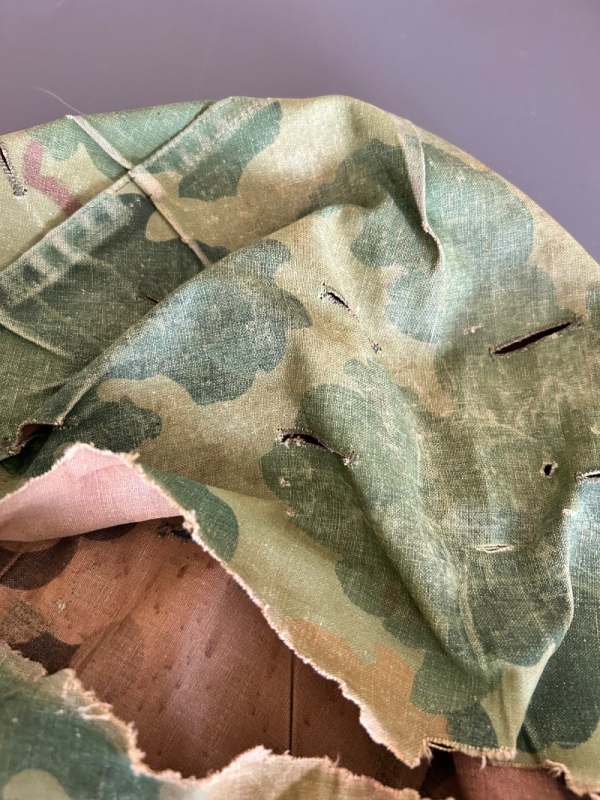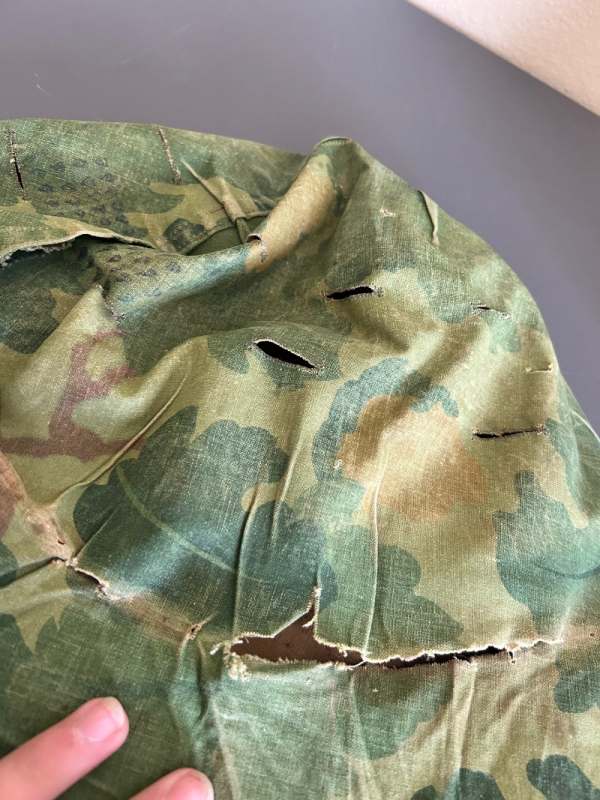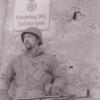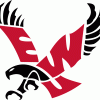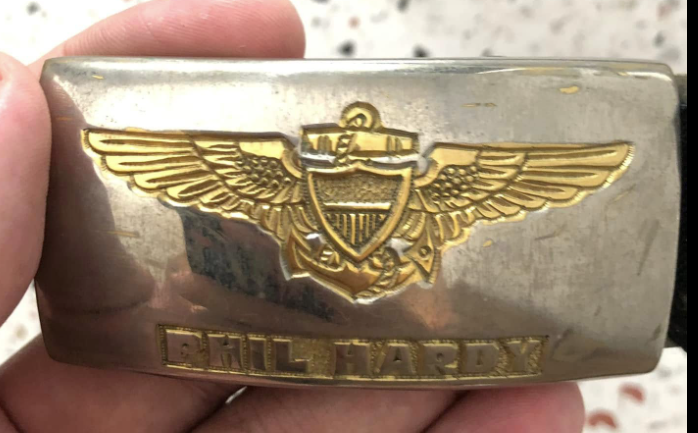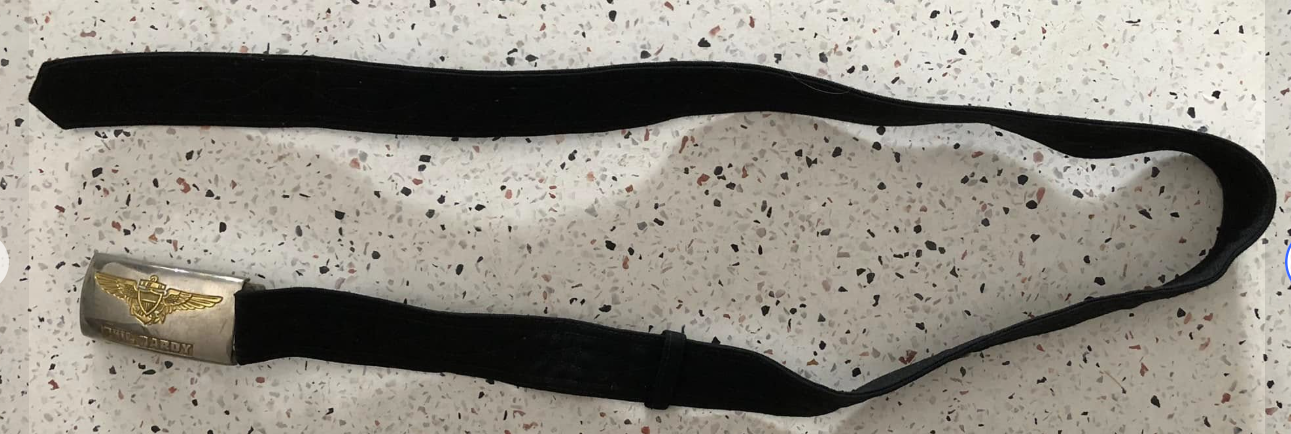All Activity
- Past hour
-
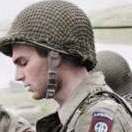
Extremely salty graffitied and named Nam’ helmet. Possibly ID’d!
Gear Fanatic replied to Gear Fanatic's topic in M-1; M-1C & M-2 HELMETS
To me this is definetly an in country worn helmet if I’ve ever seen one, the cover is super worn and faded, there are tears basically all throughout the brim to the point where it’s basically ripped in half, there are small little pebble size holes all throughout the cover, and especially in the top, the top is a whiteish grey khaki kinda of color from how many times it’s been late down, if ya’ll don’t think this is genuine wear, I don’t know what is… Also, I hope this all comes across in a respectful manner, Not trying to argue or cause problems, but I am very confident in this helmet. -

Extremely salty graffitied and named Nam’ helmet. Possibly ID’d!
Gear Fanatic replied to Gear Fanatic's topic in M-1; M-1C & M-2 HELMETS
For example here’s a comparison of the outside used sort of the helmet and the flaps that still retain most of there color. -

Extremely salty graffitied and named Nam’ helmet. Possibly ID’d!
Gear Fanatic replied to Gear Fanatic's topic in M-1; M-1C & M-2 HELMETS
The giant tears around the rim could not have been done by bad storage as when the helmet was found the cover was rolled up with the band inside and under the helmet, away from the elements. -

Extremely salty graffitied and named Nam’ helmet. Possibly ID’d!
Gear Fanatic replied to Gear Fanatic's topic in M-1; M-1C & M-2 HELMETS
- Today
-

The evolution of the army “meat can”
WalkaHeap1989 replied to WalkaHeap1989's topic in (1866-1890) PLAINS INDIAN WARS - Westward Expansion
Thanks! Always glad to share my knowledge on this stuff. -
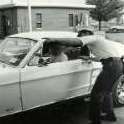
Extremely salty graffitied and named Nam’ helmet. Possibly ID’d!
Marshallj replied to Gear Fanatic's topic in M-1; M-1C & M-2 HELMETS
Looks like poor storage and the elements contributed to the demise of that cover. - Yesterday
-

What’s the Loudest Military Aircraft You’ve Ever Heard – In Person?
WW2geek replied to Sophie's topic in MILITARY AIRCRAFT & AVIATION
F-35 in full burner taking off right over my head. -
I have put together a list of all known NATOPS manuals. I have included dates on the latest version that I currently have. AV-8: AV-8A/C NAVAIR 01-AV8A-1 (12-1-1981) AV-8B NAVAIR A1-AV8BB-NFM-000 A-1: A-1H/J NAVWEPS 01-40ALF-1 (2-1-1966) EA-1F NAVWEPS 01-40ALE-1 A-3: A/KA-3A/B NAVIR 01-40ATA-1 (9-1-1966) R/NR/RA-3B NAVAIR 01-40ATB-1 (10-15-1964 Changed 10-1-1965) EA-3B/TA-3B NAVAIR 01-40ATD-1 (Later folded into ATB-1) (1-15-1981) KA/EKA-3B NAVAIR 01-40ATE-1 (Later folded into ATA-1) (10-1-1967 Changed 6-1-1968) A-4 A-4A/B NAVAIR 01-40AVA-1 A-4B/C NAVAIR 01-40AVB-1 A-4E/F NAVAIR 01-40AVC-1 (11-15-1968 Changed 3-1-1977) A-4C/L NAVAIR 01-40AVE-1 (1-1-1973 Changed 4-1-1977) A-4M NAVAIR 01-40AVM-1 (11-1-1971 Changed 3-1-1987) OA-4M NAVAIR 01-40AVD-1P (2-1-1981) TA-4F/J NAVAIR 01-40AVD-1 (8-1-1988 Changed 10-1-1992) A-5: A-5A NAVWEPS 01-60ABA-1 (5-1-1965) RA-5C NAVAIR 01-60ABC-1 (6-1-1977) A-6 A-6A/B/C NAVAIR 01-85ADA-1 (8-1-1974 Changed 10-1-1975) A-6E/KA-6D NAVAIR 01-85ADF-1 (7-1-1994 Changed 11-15-1995) EA-6 EA-6A NAVWEPS 01-85ADB-1 (5-1-1966) EA-6B ICAP II NAVAIR 01-85ADC-1 (1-1-2009) EA-6B ICAP III NAVAIR 01-85ADX-1 (9-15-2016) A-7: A-7A/B NAVAIR 01-45AAA-1 A-7C/E NAVAIR 01-45AAE-1 (4-1-1987 Changed 5-1-1989) TA-7 NAVAIR 01-45AAF-1 C-1: C-1A NAVAIR 01-85SAB-501 C-2: C-2A NAVAIR 01-85WBB-1 C-2A(R) NAVAIR A1-C2AHA-NFM-000 (11-30-2008) C-2A Lot 4 NAVAIR A1-C2AHB-NFM-000 C-9 C-9B NAVAIR 01-C9BAAA-1 (12-29-2006) C-12: UC-12B/F/M NAVAIR A1-C12BM-NFM-000 (2-1-2007) TC-12B NAVAIR 01-C12AAB-1 (4-15-2012) UC-12W A1-C12WA-NFM-000 C-20: C-20D NAVAIR 01-C20DAAA-1 (4-20-1989 Changed 2-1-1995) C-20G NAVAIR 01-C20GAAA-1 C-26: C-26E NAVAIR 01-C26DA-NFM-000 (5-30-2008) C-35: UC-35C/D NAVAIR 01-C35CAA-1 C-37: C-37A NAVAIR 01-C37A-1 C-37B NAVAIR 01-C37B-1 (11-1-2004) C-40: C-40A NAVAIR 01-C40AA-NFM-000 (1-15-2007) C-54: C/VC-54 NAVAIR 01-40NM-1 C-117: C/VC/TC-117D NAVAIR 01-40NK-1 (11-1-1967 Changed 11-15-1971) C-118: C-118 NAVAIR 01-40NLA-1 (5-1-1966) C-119: C-119F NAVAIR 01-115CCB-1 C-121: C-121J/EC-121K/M/ WC-121N/NC-121K NAVAIR 01-75CKC-1 C-130: C-130T NAVAIR 01-75GAL-1 (11-15-2006) KC-130F NAVAIR 01-75GAA-1 (4-1-2002) KC-130J NAVAIR 01-75GAJ-1 (4-1-2012) KC-130R NAVAIR 01-75GAG-1 (8-1-1995 Changed 2-1-1998) KC-130T NAVAIR 01-75GAH-1 (11-15-2008) EC-130G/Q NAVAIR 01-75GAE-1 (4-1-1983 Changed 6-15-1986) LC-130F/R NAVAIR 01-75GAB-1 DC-130A NAVAIR 01-75GAF-1 C-131: C-131 NAVAIR 01-5MRB-1 VC-131H NAVAIR 01-5MRC-1 F-8: F-8A/B NAVAIR 01-45HHA-501 (8-15-1964 Changed 4-15-1968) F-8C NAVAIR 01-45HHC-501 F-8D/E NAVAIR 01-45HHD-1 (11-1-1964 Changed 3-1-1968) F-8H/J NAVAIR 01-45HHE-1 (5-1-1974) F-8K/L NAVAIR 01-45HHC-1 RF-8A NAVWEPS 01-45HHB-501 (8-15-1964) RF-8G NAVAIR 01-45HHB-1 (9-1-1978) F-4: F-4B/N NAVAIR 01-245FDB-1 (5-1-1975 Changed 5-1-1985) F-4J/S NAVAIR 01-245FDD-1 (12-1-1988) F-4J (Blue Angels) NAVAIR 01-245FDE-1 RF-4B NAVAIR 01-245FDBC-1 (2-15-1987) QF-4N NAVAIR 01-245FDQN-1 QF-4S NAVAIR 01-245FDQS-1 F-5: F-5E/F/N NAVAIR 01-F5AAA-1 (1-6-2006) F-9: TF-9J NAVWEPS 01-85FGH-501 (12-15-1963 F-10: EF-10B NAVAIR 01-40FAB-1 (4-1-1969 Changed 10-15-1969) F-14: F-14A NAVAIR 01-F14AAA-1 (5-15-2003 Changed 1-15-2004) F-14B NAVAIR 01-F14AAP-1 (8-1-2001 Changed 9-1-2004) F-14D NAVAIR 01-F14AAD-1 (4-15-2002 Changed 9-1-2004) F-18: F-18A/B/C/D NAVAIR A1-F18AC-NFM-000 (9-15-2008) F-18 E/ F NAVAIR A1-F18EA-NFM-000 (7-15-2015) (Later Combined) EA-18G NAVAIR 01-E18GA-NFM-000 (5-15-2008) (Later Combined) NAVAIR A1-EFG18-NFM-000 (Combined NATOPS) F-111: F-111B NAVAIR 01-10FAB-1 (3-15-1968 Changed 5-15-1968) E-1: E-1B NAVAIR 01-85WAA-1 E-2: E-2A/B/TE-2B (Year Dependent) NAVAIR 01-85WBA-1 (11-1-1973) E-2C (Group 0) NAVAIR 01-E2AAA-1 (9-30-1999) E-2C (Group II) NAVAIR 01-E2AAB-1 (9-30-1999) (Later folded into AAF-1) E-2C (HEK2K) NAVAIR 01-E2AAC-1 (11-15-2002) (Later folded into AAF-1) E-2C Combined NATOPS: NAVAIR 01-E2AAF-1 (9-15-2008) E-2C (CNS/ATM) NAVAIR 01-E2AAH-1 E-2D NAVAIR 01-E2AAG-1 E-6: E-6A NAVAIR A1-E6AAA-NFM-000 (12-15-1995 Changed 2-1-1998) E-6B: NAVAIR A1-E6AAB-NFM-000 (11-15-2007) H-1: UH-1E, UH-1L, TH-1L, HH-1K NAVAIR 01-110HCA-1 (4-1-1972 Changed 3-1-1983) UH-1N NAVAIR 01-110HCE-1 (11-1-2007) UH-1Y NAVAIR 01-110HCG-1 (4-15-2009) AH-1J NAVAIR 01-110HCB-1 (12-1-1972) AH-1T (Pre TOW) NAVAIR 01-H1AAA-1 AH-1T (Post TOW) NAVAIR 01-H1AAB-1 (8-1-1980 Changed 2-15-1983) AH-1W NAVAIR 01-H1AAC-1 (11-15-2007) AH-1Z NAVAIR 01-H1AAD-1 (5-1-2008) H-2 UH-2A/B NAVWEPS 01-260HCA-1 UH-2C NAVAIR 01-260HCB-1 (9-15-1969) HH-2C/D NAVAIR 01-260HCC-1 HH/SH-2D/F NAVAIR 01-260HCD-1 S-2G NAVAIR 01-260HCG-1 (5-1-1995) H-3: UH/SH/HH-3A/G (Date Dependent) NAVAIR 01-230HLC-1 (4-1-1974) VH-3A NAVAIR 01-230HLY-1 (6-1-1993) SH-3A (MARS) NAVAIR 01-230HLC-1M HH-3A NAVAIR 01-230HLF-1 (Later folded into HLC-1) SH/UH-3H: NAVAIR 01-230HLH-1 (6-9-2000) VH-3D 01-VH3DAA-1 H-34: UH-34D/G/J NAVWEPS 01-230HLB-1 SH-34J NAVWEPS 01-230HLAA-1 H-46: CH/UH/HH-46A NAVAIR 01-250HDA-1 (Later combined into HDB-1) (4-1-72 Changed 10-1-75) CH/UH-46D/F NAVAIR 01-250HDB-1 CH-46E (Pre SR&M) NAVAIR 01-250HDC-1 H-46D (Post SR&M) NAVAIR A1-H46D-NFM-000 (6-15-2001) CH-46E(Post SR&M) NAVAIR A1-H46AE-NFM-000 (7-30-2008) CH-46E (SAR) NAVAIR A1-H46AE-NFM-100 H-60: SH-60B NAVAIR A1-H60BB-NFM-000 (4-1-2008) H-60F/H NAVAIR A1-H60CA-NFM-000 (5-1-2000) MH-60R NAVAIR A1-H60RA-NFM-000 (6-1-2008 Changed 4-15-2009) MH-60S NAVAIR A1-H60SA-NFM-000 (9-1-2008) H-53 CH-53A/D NAVAIR 01-230HMA-1 (7-31-2007) RH-53D NAVAIR 01-53AAA-1 CH-53E NAVAIR A1-H53BE-NFM-000 (3-15-2006) MH-53 E NAVAIR A1-H53ME-NFM-000 (12-15-2000) CH-53K NAVAIR A1-H53KA-NFM-000 HU-16: HU-16C/D NAVAIR 01-85AC-1 OV-10: OV-10A NAVAIR 01-60GCB-1 (4-1-1976 Changed 12-1-1980) OV-10D (Pre SLEP) NAVAIR 01-OV10D-1 (2-1-1982) OV-10D (Post SLEP) NAVAIR 01-OV10DA-1 (10-1-1987 Changed 10-1-1990) S-2 S-2A/C/F NAVWEPS 01-85SAA-1 (Later became TS/US/-2A/B/C NATOPS) TS/US/-2A/B/C NAVAIR 01-85SAA-1 US/ES-2D NAVAIR 01-85SAE-1 S-2D/E/G (Later E/G only) NAVAIR 01-85SAD-1 (5-1-1971) S-3 S-3A NAVAIR 01-S3AAA-1 US-3A NAVAIR 01-US3AAA-1P ES-3A NAVAIR 01-ES3AAA-1 (8-1-1996) S-3B NAVAIR 01-S3AAB-1 (9-1-2005) P-2: SP-2E NAVAIR 01-75EDA-1 (Later used by DP-2E) (9-1-1965) SP-2H NAVAIR 01-75EEB-1 (12-1-1965) P-3 P-3A/B NAVAIR 01-75PAA-1 RP-3D NAVAIR 01-75PAA-111 EP-3B NAVAIR 01-75PAA-101 EP-3E NAVAIR 01-75PAA-121 EP-3J NAVAIR 01-75PAA-1.3 (10-1-1997) P-3C NAVAIR 01-75PAC-1 (8-1-2007) EP-3E ARIES II NAVAIR 01-75EPS-1 P-8: P-8A NAVAIR A1-P8AAA-NFM-000 T-1: T-1A NAVAIR 01-75FJD-1 T-2: T-2A NAVWEPS 01-60GAA-1 (4-15-1966) T-2B/C (Later C only) NAVAIR 01-60GAB-1 (10-15-1996) TC-4: TC-4C NAVAIR 01-85TCA-1 T-6: T-6A NAVAIR A1-T6AAA-NFM-100 (1-24-2006 Changed 5-1-2008) T-6B NAVAIR A1-T6AAB-NFM-100 (6-1-2009 Changed 12-1-2012) T-28: T-28B/C NAVWEPS 01-60FGB-1 (5-15-1966 Changed 1-1-1981) T-34: T-34B NAVAIR 01-90KDB-1 (3-1-1981) T-34C NAVAIR 01-T34AAC-1 (4-1-2005) T-33: T-33B NAVAIR 01-75FJC-1 T-39: T-39D NAVAIR 01-60GBA-1 (9-1-1976 Changed 11-1-1979) CT-39E/G/N (Dependent on year) NAVAIR 01-60GBE-1 (4-15-2004) T-44: T-44A NAVAIR 01-T44AAA-1 (2-29-2008) T-44C NAVAIR 01-T44AAC-1 (4-1-2010) T-45: T-45A NAVAIR A1-T45AB-NFM-000 (1-15-1997 Changed 6-1-2001) T-45C NAVAIR A1-T45AC-NFM-000 (10-1-2013) TH-57: TH-57A NAVAIR 01-110HCC-1 TH-57B/C NAVAIR 01-H57BC-1 (8-15-2012) TH-73: TH-73A NAVAIR 01-H73A-1 UC-45: UC/RC-45J NAVAIR 01-90CE-1 (11-15-1967) V-22: V-22A NAVAIR A1-V22AA-NFM-000 MV-22B NAVAIR A1-V22AB-NFM-000 (6-15-2011) CMV-22B NAVAIR A1-V22AD-NFM-000 RQ-2: RQ-2A NAVAIR A1-SRRPV-NFM-000 (12-1-1999) RQ-2B NAVAIR A1-RQ2BA-NFM-000 RQ-7: RQ-7B A1-RQ7BA-NFM-000/010 RQ-7BV2 A1-RQ7BB-NFM-000/010 RQ-21: RQ-21A A1-RQ21A-NFM-000 MQ-8: MQ-8B NAVAIR A1-MQ8BA-NFM-000 MQ-8C A1-MQ8CA-NFM-000 MQ-4: MQ-4C NAVAIR A1-MQ4CB-NFM-000 NATOPS manuals for aircraft with unknown titles: VH-60N VH-92A T-54A MQ-25 (Might still be draft or preliminary)
-

Extremely salty graffitied and named Nam’ helmet. Possibly ID’d!
Gear Fanatic replied to Gear Fanatic's topic in M-1; M-1C & M-2 HELMETS
Brown side is also pretty rusted, and it’s stained throughout. -

Extremely salty graffitied and named Nam’ helmet. Possibly ID’d!
Gear Fanatic replied to Gear Fanatic's topic in M-1; M-1C & M-2 HELMETS
The pictures don’t do it justice, it’s nearly ripped in half and it super faded and soiled, there’s holes all over it to, I’ll try to get better pictures of the cover alone to prove it. -

Extremely salty graffitied and named Nam’ helmet. Possibly ID’d!
The Rooster replied to Gear Fanatic's topic in M-1; M-1C & M-2 HELMETS
Honestly.... It looks in too good of shape to have been worn in country..Not by Infantry anyway.... The ones Ive seen that are deemed authentic are super faded,,, torn and oil spattered. dirty as well. -

Extremely salty graffitied and named Nam’ helmet. Possibly ID’d!
Gear Fanatic replied to Gear Fanatic's topic in M-1; M-1C & M-2 HELMETS
Ok, a little more context… So as some of you may know, Native American families are pretty large when it comes to “relatives” I was just talking to him now and he said he found it in the house of his aunt but that house has just been passed down over 3 generations at least and rented by distant cousins of the family. He said that house is sort of a “family house” as there kinda on a small family compound where he found this one exactly. So the house has switched hands many times He said he doesn’t know who exactly it belonged to, and that he’ll ask them. He said it’s also hard to understand them, because most of them don’t speak very good English and either speak broken Spanish or alonguiquin which is there native language. So to be honest this is going to be VERY hard to figure out. I’ll keep working with him, and I’ll keep ya’ll posted. hopefully this helped to some extent. In it’s own, what do you guys think of the helmet? -

Extremely salty graffitied and named Nam’ helmet. Possibly ID’d!
The Rooster replied to Gear Fanatic's topic in M-1; M-1C & M-2 HELMETS
? Harjo Wikipedia https://en.wikipedia.org › wiki › Harjo Harjo is a surname, derived from the Muscogee war title Hadcho or Hadjo, meaning "so brave as to seem crazy", "brave beyond discretion", "foolhardy", ... Like 644td said... wouldnt your friend know who the relative is or was? And their service record? Meaning wouldnt they know if their relative was in Vietnam? And their relatives name? Right now as it stands... you have sort of an ID'd headband. You need more info to call it used in Vietnam. Martys comment.... "Helmet and cover brought home from the guard unit more common. " I would agree. In fact, I think back in the day, when you mustered out of the Guard, you were allowed to keep your TA-50 gear which includes the helmet. -

Extremely salty graffitied and named Nam’ helmet. Possibly ID’d!
644td replied to Gear Fanatic's topic in M-1; M-1C & M-2 HELMETS
Do you have any information on your friends relative. Salty doesn’t translate to in country it could be a NG cover. More information on the vet is key. Covers brought home more common than a helmet and cover. Helmet and cover brought home from the guard unit more common. Do you have close up pictures of the markings on the back of the cover? Its alway exciting to find a marked cover Marty -
Both were repainted and named to Capt Roy D Metcalf O-277096. They originally were Medical Chests No.1 and the other unnumbered. Anyone care to research the Captain?
-

The evolution of the army “meat can”
NBCguy replied to WalkaHeap1989's topic in (1866-1890) PLAINS INDIAN WARS - Westward Expansion
Wow neat collection. Thanks for posting. -
 CDR_K changed their profile photo
CDR_K changed their profile photo -

Extremely salty graffitied and named Nam’ helmet. Possibly ID’d!
Gear Fanatic replied to Gear Fanatic's topic in M-1; M-1C & M-2 HELMETS
To me there is no doubt this helmet was worn in country, it is way to salty to have not been. -

Extremely salty graffitied and named Nam’ helmet. Possibly ID’d!
Gear Fanatic replied to Gear Fanatic's topic in M-1; M-1C & M-2 HELMETS
I have no clue, it’s just a bunch of tick markes in the shape of triangles. -

U.S. Army Cavalry - "Indian Wars" - My collection
23Robert replied to 23Robert's topic in (1866-1890) PLAINS INDIAN WARS - Westward Expansion
Thanks for the compliments and likes. I will be starting a new thread on my Civil War cavalry (Union) collection in the Civil War section soon. Robert -

Extremely salty graffitied and named Nam’ helmet. Possibly ID’d!
agate hunter replied to Gear Fanatic's topic in M-1; M-1C & M-2 HELMETS
Cover could have been in Vietnam, what is on the back of it? -
Yep! Many good things come to an end….
-

Extremely salty graffitied and named Nam’ helmet. Possibly ID’d!
Gear Fanatic replied to Gear Fanatic's topic in M-1; M-1C & M-2 HELMETS
Anyone have any thoughts? Maybe I posted this in the wrong place? Maybe recent finds might have been a. Better section… -
. Hi earlymb, It was basically all Willys except the engine hood and the block, I checked pretty much everywhere that I know Ford parts are marked. Norman D. Landing, Forum Normandy Correspondent, July 05 2O25. ….
-
Thanks for the kind words Lars!
-
I had seen this buckle before because it is in my file of buckle shots. The price I saw on it was $89, but now it’s on FB Military Collectors, Make Offer pages.


